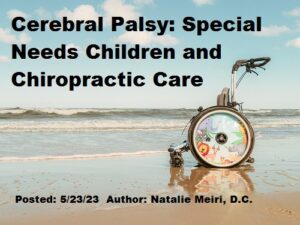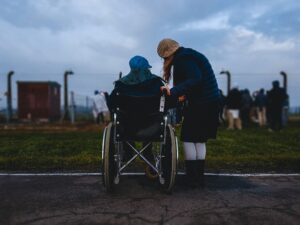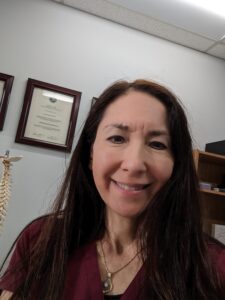
For special needs children there may be neuromusculoskeletal problems a chiropractor can help. This post is about Cerebral Palsy: Special Needs Children and Chiropractic Care.
What is Cerebral Palsy?
Cerebral Palsy is a non progressive (does not get worse over time) motor disorder. It affects a child’s ability to move and maintain balance and posture. It is the most common motor disability in childhood. Approximately 2 out of every 1,000 children in the United States have it.
Cause of Cerebral Palsy
Cerebral Palsy’s specific cause is unclear. So Cerebral means relating to the brain. And Palsy means weakness or problems with the muscles.
Etiology (cause of disease) may range from in utero problems, perinatal and neonatal (before birth to after birth) problems. There may be abnormal brain development or damage to the developing brain that affects a child’s ability to control his or her muscles. For instance, birth trauma, asphyxia (lack of oxygen) due to birth complication in 15% of cases, abnormal birth position, prematurity, and central nervous system trauma or systemic (one or more of the body’s systems) disease have been identified as causes.

Symptoms and Types of Cerebral Palsy
There are four types: (1) spastic (stiff/ tight muscles), (2) athetoid or dyskinetic (abnormal posturing, tone, and involuntary movements), (3) ataxic (lack of coordination and balance), and (4) mixed.
Firstly, seventy percent to 80% are the spastic type characterized by stiffness, weakness, muscle hypertonicity (increased tone), and a tendency toward contractures. For example, “scissors” gait and toe-walking are prevalent.
Secondly, milder forms may affect lingual/palatal (roof of mouth) movement resulting in speech disorders.
Thirdly, with involvement of the basal ganglia the athetoid/dyskinetic type (20% of cases) occurs. The basal ganglia are brain structures which help process execution of motor, cognitive and emotional activities. Furthermore, either slow writhing movements of the extremities (athetoid) or the proximal muscle groups of the trunk (dystonic), or abrupt jerking type movements (choreiform) are found. Dysarthria (difficulty speaking because the muscles you use for speech are weak) is quite common and often severe.
Fourthly, the symptoms of cerebral palsy vary from child to child. A child with severe cerebral palsy might need to use special equipment to be able to walk. Additionally, they might not be able to walk at all and might need lifelong care. Similarly, with a milder form, they might walk awkwardly, but might not need any special help. Cerebral Palsy does not get worse over time. However, the exact symptoms can change over a person’s lifetime.
Lastly, many children with cerebral palsy also have related conditions such as intellectual disability. And all children with Cerebral palsy have problems with movement and posture. Other problems include seizures and visual, hearing or speech impairment problems. All children with cerebral palsy have problems in the spine (such as scoliosis) or joint problems (e.g. contractures).

Studies show that children with cerebral palsy with chiropractic care showed neuromuscular and mobility improvement.
Some were able to sit up (when they previously couldn’t), walk upstairs without assistance, and use their arms and hands better. Muscles were not as limp, they gained confidence, walked steadier, and had a significant improvement in their emotional state. Improvement in both sleep quality and education were also observed and documented.
Improvement/ reduction in the following was also reported after children with cerebral palsy had chiropractic care:
- Pain and muscle stiffness
- Breathing problems
- Drooling
- Muscle contractions
- Neck pain
- Musculoskeletal conditions
- Gait issues
- Spine issues
- Anxiety and stress
- Headaches and chest pain
- Leg/arm problems
- Speech problems due to respiratory issues
- Spasticity (continual contraction of certain muscles)
- Urinary incontinence
Chiropractic Care of Cerebral Palsy at Meiri Chiropractic in West Palm Beach
For Pediatric Chiropractic Care in 2009, a survey found that there were about 68 million pediatric visits to chiropractors. The National Board of Chiropractic Examiners’ most recent practice analysis, issued in 2010, found that about 17 percent of chiropractic patients were under age 18 — approximately 7.7 percent aged five years or younger and some 9.4 percent between ages six and 17. In deed, the American Chiropractic Association cites a study done in 2014 confirming that chiropractic adjustments are overwhelmingly safe in infants and children.
Chiropractic care is modified for children. This is especially necessary for special needs children who have specific developmental anatomy. Dr. Natalie Meiri delivers fast adjustments to the spine and extremities (limbs) that are low intensity (low force) and low amplitude (low displacement) for kids. She also has helped babies and kids utilizing soft tissue techniques, cranial sacral therapy, and homeopathy. Dr. Natalie Meiri has treated babies with ear infections, kids with ADHD, autistism, with developmental disorders, scoliosis, sports injuries and various growing problems. Does your child have cerebral palsy? Contact her at 561-253-8984 for further information on Cerebral Palsy: Special Needs Children and Chiropractic Care.